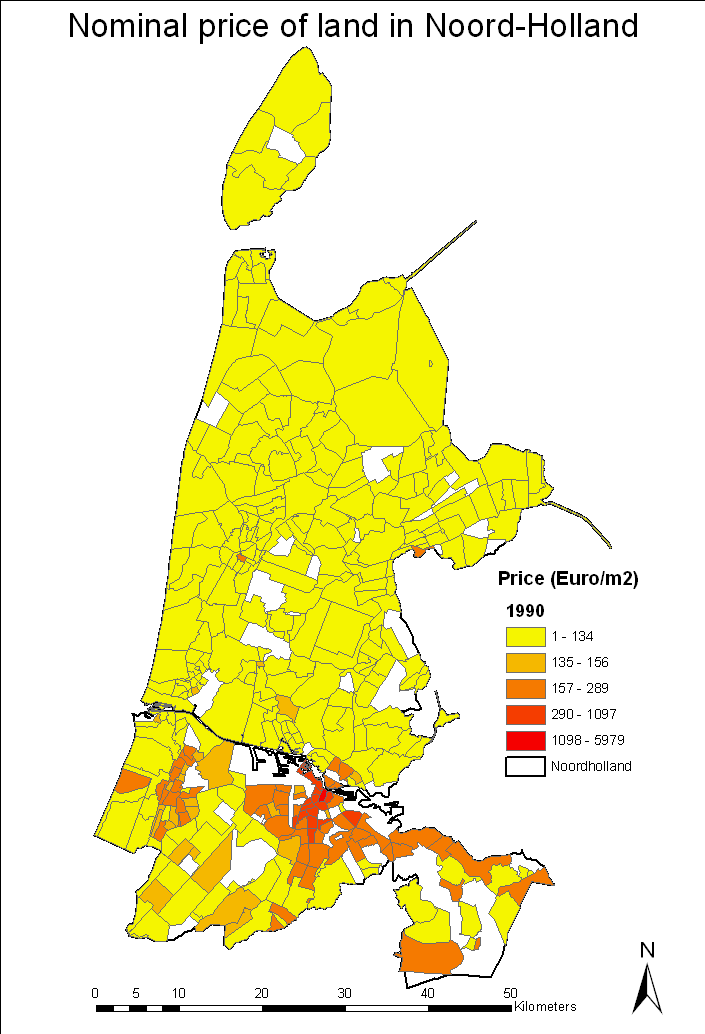 (Click to enlarge)
(Click to enlarge)
Our methodology critically hinges on the availability of information on lot sizes. By adding lot sizes to an otherwise standard hedonic pricing model that explains variation in housing prices from variation in their characteristics, we can derive the willingness to pay at the margin for an additional square meter of land. This information is available in the Netherlands for a long period (viz. 1985-2007). This provides us with a unique source of information, both in terms of time span as well as coverage since the brokers united in the NVM cover about 70-80% of all housing transactions in the Netherlands.
We use this unique source of information to apply the methodology for deriving land rents. The results are shown to generate a very sensible picture of land rents and their variation across space. We can also use the information to derive relationships between, for example, land rents on the one hand and population densities or distances from the city centre on the other hand. The information also enables us to show temporal dynamics.
This note proceeds as follows. Section 2 develops the methodology and describes the data. Section 3 presents and discusses the results, and Section 4 concludes and presents directions for further research.
For a further detailed explanation of the applied methodology and discussion of results of the first empirical tests on 4-digit zipcode level, see the methodological paper which is available for download under Publications.